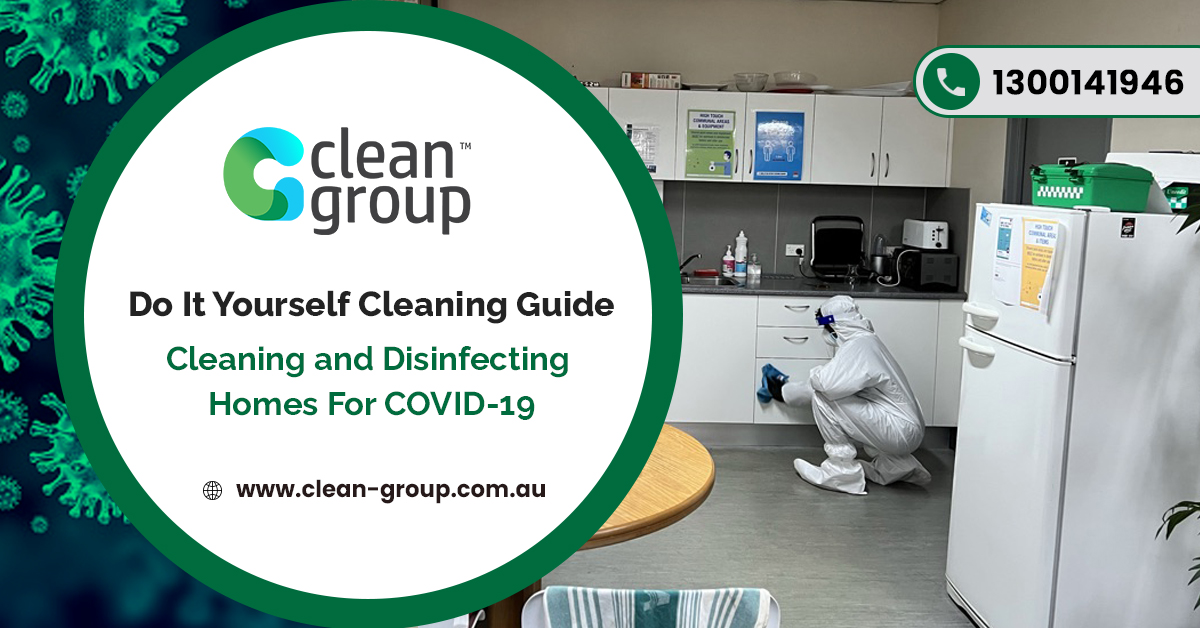The Covid-19 pandemic has changed the way we all live!
Contact with respiratory droplets formed when infected individual sneezes or coughs is the most common way COVID-19 transmits from one person to the next. If someone in your house comes into close contact with the infected individual, the droplets might fall directly into their nose, eyes, or mouth. COVID-19 can also be transmitted through the air, with the highest risk occurring in crowded, poorly ventilated indoor environments.
If a person touches something contaminated with the COVID-19 virus and then touches their nose, mouth, or eyes before washing their hands, they might become sick. According to research, the COVID-19 virus can live for long periods of time on certain surfaces. Get more information, about Covid cleaning services
Establishing an appropriate cleaning and disinfecting routine in your home is a vital approach to safeguarding you and your family from the danger of COVID-19 exposure.
In order to eradicate the COVID-19 virus, a combo of cleaning and disinfection is essential.
Homes need to be cleaned on a daily basis at the very least. In most cases, a simple cleaning with water and detergent is sufficient. You can disinfect all your household appliances after they’ve been cleaned.
The likelihood of contaminants being present determines when and how often your house needs to be cleaned. Cleaning and disinfecting surfaces that are often touched must be prioritized.
Alternatively, you might be able to use a combination of detergent and disinfectant to conduct a two-in-one clean and disinfection.
How Should You Clean and Disinfect Your Home?
Cleaning is when you use a water and detergent solution to physically remove bacteria, viruses, dirt, and grime from your home. A detergent is a type of surfactant that works with water to disintegrate grease and oil. It works with anything labelled as a detergent.
Disinfection is the process of killing microorganisms on surfaces with chemicals. Home Cleaning is necessary before disinfection because grime and dirt might impair the disinfectant’s effectiveness to kill bacteria.
Cleaning must begin with the cleanest surface and advance to the dirtier as time goes on. To prevent the risk of slipping and falling and the spread of bacteria and viruses via droplets, surfaces must be left as dry as possible after cleaning.
It is critical to clean a surface before disinfecting it, as grime and dirt can impair the capacity of disinfectants to kill bacteria. If the object hasn’t been cleaned with a detergent first, the sanitiser might not be able to destroy the virus.
The correct manner to use disinfectant is outlined on the package or in the manufacturer’s instructions. To be efficient at killing the Covid-19 virus, disinfectants take some time. If the product does not state a time, leave the disinfectant for 10 minutes before you remove it.
What Areas in Your Home do You Need to Clean and Disinfect?
Counters, tabletops, door handles, light switches, toilets, desks, taps, TV remotes, cupboard handles, kitchen surfaces, phones, and toys are all surfaces that need to be cleaned first. Irrespective of when they were last cleaned, all surfaces that are clearly dirty or have a spill must be cleaned immediately.
Surfaces that are often touched must be cleaned and disinfected on a regular basis. At the very least, commonly touched surfaces in the house must be cleaned and disinfected once a day.
More regular cleaning and disinfection of commonly touched surfaces is recommended if you leave your home often. Routine disinfection, plus daily cleaning, might not be necessary if it is just you and your family members, and all of you don’t leave the house regularly.
Are There Any Areas You Need to Prioritize?
Cleaning and disinfecting surfaces that are often touched must be prioritized. The items mentioned above need to be at the top of your cleaning checklist. Cleaning and disinfecting surfaces that are clearly filthy and used by many people in the house must also be prioritized.
The Best Products for Disinfecting and Cleaning Surfaces in Your Home
It is recommended to clean with warm water and detergent. Grease and filth are broken down, allowing the surface to be wiped clean. It works with anything labelled as a detergent. Disinfectants must only be used after the surface has been thoroughly cleaned.
Alcohol with a minimum concentration of 70%, chlorine bleach in a mixture of 1,000 parts per million, wipes and sprays, or oxygen bleach-containing quaternary ammonium compounds are all safe for use on hard surfaces in your house.
These chemicals are labelled as “disinfectants” on the container and have to be diluted or used according to the packaging’s directions to be effective.
If you’re going to use a store-bought disinfectant, look for one with antiviral activity, which means it can destroy viruses. This is generally noted on the product’s label. Alternatively, you can use diluted bleach. If you’re using a newly produced bleach solution, make sure to follow the manufacturer’s directions for dilution and application.
It is only going to work if you dilute it to the correct concentration. It’s essential to keep in mind that prediluted bleach solutions lose their potency over time and when exposed to sunshine.
Can You Make Your Own Disinfectant if All the Products Are Sold Out?
Store-bought disinfectants are approved by the government, so you can trust them to work. If you don’t have access to a store-bought disinfectant, you can make a disinfection solution with water and bleach. Baking soda (bicarbonate of soda), vinegar, aromatic oils, mouthwash, as well as a saline solution are not effective in killing COVID-19.
If you’re making a disinfectant solution, be careful with the chemicals you use because they can be harmful. Always read and obey the label’s directions and safety precautions. It is doubtful that the solution is going to be effective if it is not made and used according to the instructions.
How to Clean Your Cutlery, Linen, and Crockery
If the products may be washed, do so according to the manufacturer’s recommendations at the warmest temperature available. Completely dry the clothes. If you shake your filthy laundry, the infection may spread via the air.
Dishwash cutlery and dishes on the maximum setting in your dishwasher. If you don’t have access to a dishwasher, hand wash in soapy, hot water.
How to do Your Laundry
Use the hottest water setting possible and completely dry the objects. It’s okay to wash dirty laundry from someone who has been exposed to other people’s belongings.
Wear a mask and gloves while cleaning dirty laundry from a sick family member. Clean your laundry baskets or clothing hampers in accordance with surface cleaning instructions. After handling dirty laundry make sure you wash your hands.
How to Clean Softer Surfaces
Rugs, carpets, and curtains are examples of soft surfaces. Make sure to adhere to the following when cleaning them:
- Soft items must be cleaned with soap and water or detergents designed for these surfaces.
- If possible, wash the items in the hottest water setting possible and dry them completely.
- If necessary, disinfect with a product approved by the Department of Health
- Vacuum as you normally would. Wear a mask when vacuuming an area that has been occupied by a sick family member or someone who has tested positive for COVID-19 in the last 24 hours.
How to Clean Electronics
To make cleaning easier, think about using a wipeable cover on electronics (such as tablets, phones, keyboards, touchscreens, and remote controllers).
Cleaning the electronic item should be done according to the manufacturer’s guidelines. Use an approved disinfectant but bear in mind that several electronic items contain alcohol since it dries rapidly.
Tips for Using Chemical Detergents and Disinfectants Safely
- To guarantee effective and safe use, always follow the guidelines on the label of disinfection and cleaning products. Based on the guidelines on the product label, you might have to use personal protective equipment such as goggles, gloves, or glasses.
- Ensure you have enough ventilation (for instance, run fans and open windows).
- Only use the amount specified on the package.
- If diluting with water is required, use room temperature water (unless the label states otherwise).
- Diluted cleaning or disinfection solutions should be labelled.
- Keep chemicals out of the reach of children and pets when storing and using them.
- Mixing items or chemicals is not a good idea.
- Disinfection and cleaning products should not be consumed, inhaled, injected into your body, or applied directly to the skin since they might cause serious injury.
- Any surface disinfection and cleaning products should not be used to wipe or bathe persons or pets.
- People with asthma must be given special consideration. Asthma can be triggered by several disinfection and cleaning agents.
The Bottom Line
Cleaning with soap or detergent-based household cleanser minimizes the number of bacteria and viruses on surfaces and lowers the risk of infection from those surfaces.
In most cases, cleaning alone is sufficient to eliminate the majority of germ particles from surfaces. Unless someone in your house is sick or if someone who tested positive for COVID-19 has been in your home in the last 24 hours, disinfection to decrease COVID-19 transmission at home is unlikely.
When and how should you clean your home’s areas?
- Clean high-touch surfaces on a regular basis or as required, especially if you have visitors.
- High-touch surfaces, such as tables, doorknobs, handles, phones, light switches, and worktops, are an ideal place to start.
- Clean other areas in your house as needed or when they are noticeably dirty. If members of your family are especially susceptible to COVID-19, clean them more regularly. You could also disinfect the area.
- Clean surfaces with a product that is appropriate for every surface, following the product label’s directions.

